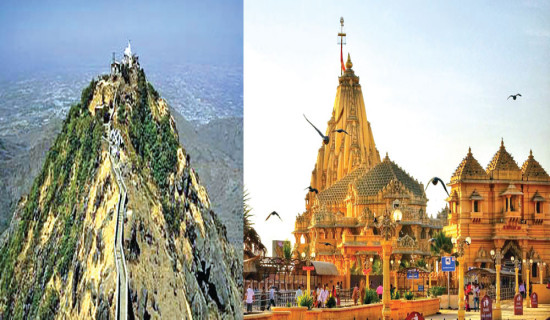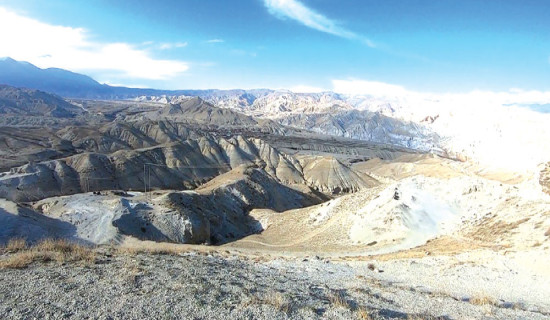- Saturday, 17 January 2026
Nepal Unique Tourist Site
Dixya Poudel
In 1953, when Edmund Hillary and Tenzing Norgay Sherpa scaled Mount Everest, Nepal was put to a global limelight. The duo had scaled the insurmountable creating history as they were the first mountaineers to reach the world’s highest summit. Since then, thousands have climbed the summit which remains a foremost tourist’s attraction in Nepal. And along with mountaineering, Nepal today continues to be a well-known destination with its unique topography, enchanting culture and traditions, a pleasant climate as well as friendly and hospitable people.
Tourism refers to the travel industry that facilitates the business of welcoming, accommodating as well as entertaining tourists. It is a business that is evaluated in trillions of dollars each year and amounted to 10.3 per cent of the global GDP in the pre-pandemic era of 2019. Tourism is thus one of the world’s largest industries that sustains millions of lives. And Nepal remains a major tourist’s attraction with tourism activities such as sightseeing, rafting, paragliding, trekking, bird watching, hiking, bungee jumping, mountain biking, and mountain climbing.
The country boasts 8 of the 14 highest mountains in the world. It isn’t thus surprising that it is a famous destination for seasoned mountaineers. Further, Nepal has several Wildlife Reserves and National Parks that too are tourist’s attractions. Travellers from all over the world particularly China, India, the USA, the UK, Australia, and several European nations visit Nepal. In the pre-pandemic era, as many as 1.17 million tourists visited the nation in 2019. Although the number plummeted greatly during the peak of the pandemic, now thanks to global vaccination and successful containment of the virus, tourism is seeing a surge.
Besides natural tourism, Nepal is also a frontrunner in cultural tourism as the nation has a multi-cultural society. Most tourists visiting the nation are enthralled by its rich and diverse festivals such as Holi which is a Hindu festival, Buddha Jayanti which is a Buddhist festival, and so on. Festivals of Dashain and Tihar which are both religious and cultural festivals too are of allure to tourists. Nepal can thus incorporate its cultural aspects in welcoming, accommodating, and entertaining foreign visitors.
Further, as a home to major religious sites such as Pashupatinath Temple, Muktinath Temple, Swayambhunath Stupa, Bouddha Stupa, Lumbini (birthplace of Lord Buddha) etc., Nepal is also an attraction for religious tourism. As such, pilgrimage is a travel for the purpose of religious values and worship and Nepal is quite popular among Asian tourists seeking a religious experience.
Looking back to the 1960s, Nepal was considered a remote nation where mostly hippies congregated in large numbers. Nepal was then an exotic place to travel to due to its pristine settings and natural vistas unadulterated by foreign influence. It attracted travellers who reveled in visiting rural and remote places due to the tag of rarity and the fact that such places were unruffled by urbanisation.
Now, as Nepal is catching up with the rest of the world, it has somewhat lost its exoticism. And there remain few exotic places worldwide as globalisation spawns its reaches. Still, Nepal continues to offer a unique place to travel to with its singular geography and cultural attributes. As Nepal strives towards economic growth, it would help to focus on its tourism sector that has a lot to offer.
















